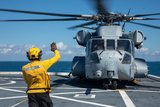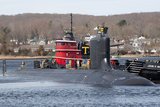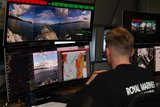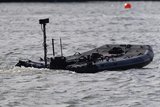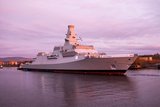US Navy’s Electronic Warfare programme reaches milestone
The programme to enhance the US Navy AN/ SLQ-32 electronic warfare system has reached a new milestone, with Lockheed Martin validating the Surface Electronic Warfare Improvement Program (SEWIP) Block 2 system’s ability to protect the navy's fleet from evolving anti-ship missile threats.
Lockheed Martin is upgrading the AN/SLQ-32(V)2 system found on all US aircraft carriers, cruisers, destroyers and other warships with key capabilities to determine if adversaries are using electronic sensors to track the ship.
Block 2 obtained a Milestone C decision in January 2013. This was followed by 11 months of land-based testing in preparation for installation on a navy warship.
According to the company, this latest test demonstrated the maturity of the open architecture electronic warfare system by performing full system operation in multiple scenarios.
Joseph Ottaviano, director of surface electronic warfare at Lockheed Martin's Mission Systems and Training division, said: ‘We are very proud of the effort the SEWIP team has put into achieving these successes. Milestone C is a critical step towards delivering these next generation systems to the fleet, and we are extremely pleased with the progress and results.’
Lockheed Martin was awarded the SEWIP Block 2 contract to upgrade the passive detection capabilities of the current SLQ-32 systems in 2009. The US Navy is incrementally adding new technologies and functional capabilities in a succession of these improvement blocks.
More from Naval Warfare
-
![UK to join US Navy’s Virginia-class submarine assembly effort to speed up construction]()
UK to join US Navy’s Virginia-class submarine assembly effort to speed up construction
The expansion of the Virginia-class submarine construction to UK shores could accelerate the project as US shipbuilders continue to fall short of delivery goals.
-
![What new technologies could be involved in UK Atlantic Bastion initiative?]()
What new technologies could be involved in UK Atlantic Bastion initiative?
As new details emerge on the UK Royal Navy’s plan to secure the North Atlantic for the UK and NATO, three main areas of opportunity for new technology are the focal point.
-
![NATO naval exercises map out future USV requirements but raise questions on acquisition]()
NATO naval exercises map out future USV requirements but raise questions on acquisition
Uncrewed surface vessels have shifted from a desirable capability to a critical one for navies. But should these systems be bought outright, rented as a service or rapidly built using commercial off-the-shelf components?
-
![New UK-Norway pact covers warship, missile and autonomous system collaboration]()
New UK-Norway pact covers warship, missile and autonomous system collaboration
The Lunna House Agreement represents multiple opportunities for cooperation between the two navies, and follows on from last year’s declaration of a joint strategic partnership between the countries.









